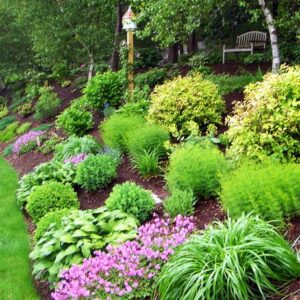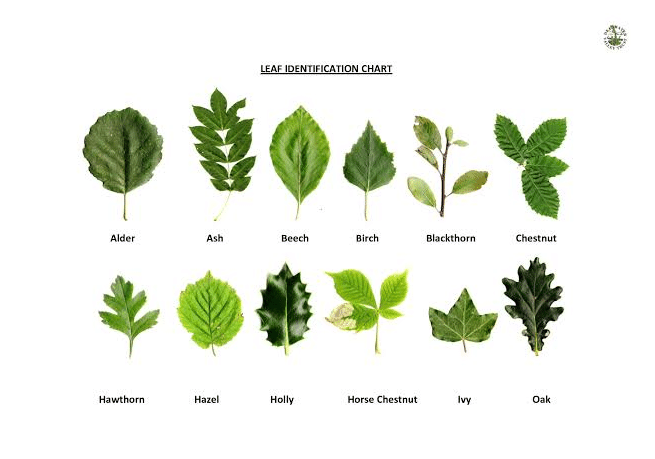Key Takeaways:
- Discover the benefits and drawbacks of using pavers versus concrete.
- Learn about costs, durability, and aesthetics to make an informed decision.
- Get insights into maintenance needs and installation processes.
Table of Contents:
- Introduction to Driveway Materials
- Understanding Driveway Pavers
- Exploring Concrete as a Driveway Option
- Cost Considerations
- Durability and Longevity
- Aesthetic Appeal
- Maintenance Requirements
- Conclusion: Making the Right Choice
Introduction to Driveway Materials
When planning enhancements to your home’s exterior, a crucial consideration is a material selected for your driveway. This choice not only impacts functionality but immensely contributes to the overall aesthetic appeal. Among the leading contenders are pavers and concrete, each bringing its own set of advantages and challenges. For those evaluating whether are driveway pavers cheaper than concrete, it becomes imperative to delve into a comparative analysis that reveals both subtle and overt differences.
In the dynamic field of landscaping, selecting the most appropriate materials involves examining current and emerging trends. Advances in technology and sustainable practices enrich the selection process, allowing homeowners to find materials that suit not only their aesthetic preferences but also environmental requirements. This systematic approach ensures the chosen material enriches the property while serving its functional purposes.
Understanding Driveway Pavers
Driveway pavers are highly regarded for their aesthetic charm and flexibility, making them a preferred choice for many homeowners looking to add an elegant and enduring element to their property’s exterior. Available in various materials like natural stone, brick, and concrete, pavers offer a breadth of design possibilities that enable personalized customization. The interlocking system used for pavers is a remarkable feature that provides both an attractive appearance and functional resilience, effectively distributing weight and pressure across the surface.
The ease of maintenance is another vital advantage of pavers. Should a paver become cracked or worn, it can be easily replaced with minimal effort and cost, preserving the integrity and visual appeal of the entire driveway. This flexibility not only makes pavers a sustainable and environmentally friendly choice but also a cost-efficient one over time. The replacement process also minimizes downtime, ensuring that any required repairs do not disrupt day-to-day life.
Pavers also offer superior drainage compared to solid concrete surfaces, reducing the risk of pooling water and potential flooding issues. Their slip-resistant texture enhances safety, making them a reliable option for both pedestrian and vehicle traffic. Additionally, pavers can withstand extreme weather conditions, from intense heat to freezing temperatures, without significant damage. Many paver options are treated with sealants to further protect against stains, fading, and wear, ensuring long-lasting beauty. With proper installation and occasional upkeep, driveway pavers can maintain their strength and elegance for decades.
Exploring Concrete as a Driveway Option
Concrete driveways are celebrated for their strength and minimalist appeal, offering a durable and seamless option for a variety of architectural styles. This material can be effortlessly shaped and customized using an array of finishes, such as textured or polished surfaces, allowing homeowners to enjoy a bespoke look that can mimic more costly materials at a fraction of the price. Concrete’s adaptability makes it an exceptionally versatile choice suitable for both contemporary and traditional homes.
Beyond customization, concrete is also distinguished by its enduring nature. It can withstand heavy vehicles and frequent usage without showing significant wear, provided it is adequately maintained. Maintenance often includes sealing to ward off moisture intrusion and protect against cracking, helping extend the lifespan of the driveway substantially. The material’s easy-to-clean surface is particularly advantageous in snowy climates, where swift and complete snow removal is critical to maintaining safe vehicle access.
Additionally, concrete’s ability to reflect light can contribute to a cooler surface temperature in warmer months, reducing heat absorption compared to asphalt. Its resistance to oil and chemical stains further enhances its practicality, as spills can be easily cleaned without long-term damage. Homeowners can also incorporate decorative elements such as stamped patterns or colored stains to enhance curb appeal. When properly installed, concrete driveways offer excellent load-bearing capacity, making them ideal for larger vehicles and RVs. Over time, the low-maintenance nature of concrete translates into long-term savings, making it a cost-effective investment for homeowners.
Cost Considerations
Assessing the cost implications of different driveway materials involves more than just initial installation expenses; it requires an examination of maintenance and repair costs over the lifespan of the material. Pavers often command a higher upfront price due to the labor-intensive process of individual placement and the quality of materials involved. Yet, their durability and ease of repair can offer significant savings in the long term, as they are less prone to cracking, and complete replacements are often unnecessary.
In contrast, concrete tends to present as a more budget-friendly option upon installation. However, potential future costs need to be considered, particularly in areas subject to severe weather conditions where cracking is more likely. Asphalt, another common choice, offers an even lower initial cost but typically requires more frequent sealing and resurfacing to maintain its integrity. Gravel driveways provide the most affordable upfront investment, though they may demand regular replenishment and leveling to prevent uneven surfaces. Stamped concrete, while aesthetically appealing and customizable, can be expensive to install and may develop surface wear over time that requires costly refinishing. The overall cost-effectiveness of any driveway material depends on factors such as climate, usage patterns, and the level of maintenance a homeowner is willing to commit to. By weighing both short-term expenses and long-term upkeep, homeowners can make an informed decision that aligns with their budget and durability expectations.
Durability and Longevity
When evaluating materials for a new driveway, a key consideration is a durability and longevity offered by each option. Driveway pavers are renowned for their incredible resilience, supported by their ability to adapt to slight shifts and movements in the earth naturally. This quality makes them particularly suitable for areas with fluctuating temperatures, where expansion and contraction are frequent.
Conversely, concrete driveways excel in areas requiring solid support, offering a robust platform that capably manages heavy vehicles and regular use. Although potential cracks from weather shifts can pose a challenge, concrete can last for many decades with a proactive maintenance approach. Regular sealing and timely attention to minor cracks help ensure both materials retain their high performance for years, proving their worth as long-term investments for any residential property.
Asphalt driveways, another popular choice, provide a flexible and cost-effective solution with a smooth finish that enhances curb appeal. While asphalt may require periodic resurfacing to maintain its integrity, proper upkeep can extend its lifespan significantly. Gravel driveways, though requiring more frequent maintenance, offer excellent drainage and a rustic aesthetic that suits rural or traditional-style homes. In regions with heavy rainfall or extreme weather, choosing a material with high water resistance can prevent erosion and structural damage over time. Ultimately, selecting the right driveway material depends on factors such as climate, budget, and personal preference, ensuring a lasting and functional investment.
Aesthetic Appeal
The aesthetic impact of a driveway extends beyond mere functionality, enhancing a property’s curb appeal and potentially increasing its market value. Pavers provide unmatched esthetic versatility, available in a wide range of colors, shapes, and designs. This allows homeowners to create intricate patterns and custom layouts that complement and enhance the character of their homes.
While concrete may initially seem limited in its design possibilities, modern techniques have revolutionized its aesthetic capabilities. Through processes like staining, engraving, and stamping, concrete can be transformed into a visually compelling surface that echoes the textures and richness of more expensive materials. This innovation allows homeowners to enjoy a high-end appearance without the accompanying high-end price tag, merging practicality with beauty seamlessly.
For those seeking a rustic or old-world charm, cobblestone driveways offer a timeless appeal that adds depth and sophistication to the property. Brick driveways, with their classic and warm aesthetic, create an inviting entrance that blends well with traditional and colonial-style homes. Homeowners looking for a sleek, contemporary look may opt for polished or exposed aggregate concrete, which provides a refined, modern touch. Additionally, incorporating decorative borders or contrasting materials can further personalize the driveway, making it a standout feature of the home. Thoughtful lighting placement along the driveway can also enhance its visual impact, adding ambiance and improving nighttime visibility.
Maintenance Requirements
Maintenance plays a vital role in the lifespan and appearance of paver and concrete driveways, and each material harbors its own set of maintenance needs. Pavers often require periodic resealing to maintain their vibrant color and a tidy appearance, alongside joint sanding to prevent weed growth. Despite these requirements, their modular nature simplifies the replacement of damaged sections, enhancing their longevity and durability.
Concrete maintenance is centered on crack prevention and moisture protection, reducing the chances of extensive damage. Regular cleaning eliminates the risk of staining from oil or other residues while sealing the surface can effectively ward off environmental deterioration. Although both materials demand a level of upkeep, the preventative measures substantially increase the driveway’s lifespan, achieving an enduring asset that enhances both the functional and visual aspects of the property.
Conclusion: Making the Right Choice
Faced with a choice between pavers and concrete, homeowners should weigh factors such as aesthetic preferences, immediate and long-term costs, maintenance efforts, and geographical considerations to make an informed decision. Both materials deliver significant advantages, from the aesthetic adaptability of pavers to the structural integrity of concrete, each serving unique priorities and environments.
Consulting with professional landscapers or construction experts can provide invaluable insights into choosing the most suitable material. This ensures a balance between style and function while accommodating individual budgets and long-term visions. Ultimately, the right choice will create a driveway that enhances your property’s curb appeal and provides a reliable and lasting solution for your home




